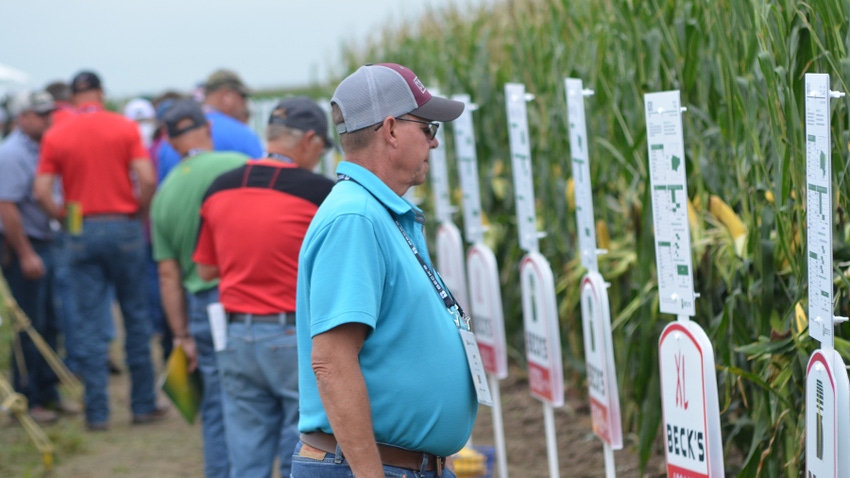
When Beck’s cut the ribbon Aug. 3 to officially open its new Practical Farm Research facility near Goehner, Neb., just off Interstate 80, there were plenty of dignitaries on hand for the company’s first field show in Nebraska — including CEO Sonny Beck and several other family members.
Area producers were anxious to visit with Beck and his family members present for the event, to see the research plots at Goehner, and to hear from agronomists about what they are finding out from what has been a challenging growing season across much of the country.
The Nebraska field show was just one of several field shows hosted by the Atlanta, Ind.-based, family-owned seed company at its PFR facilities in Nebraska, Indiana, Ohio, Kentucky, Iowa and Illinois, along with cooperator sites in Minnesota, Wisconsin, Michigan and the Delta region.
Unique opportunities
Part of the attraction of these field shows for Beck’s is to learn from its customers, and to home in research projects engaged at its PFR locations. Trey Stephens, Beck’s Nebraska field agronomist, says that many of the customer questions asked during the recent field show were centered around the early-season dry weather this year and how that might affect yield.
“There was a lot of interest around what studies we can do in the future at our new PFR site in Goehner,” he says. “I think two of the unique things that come to mind about our Nebraska site are wind and irrigation.”
The site at Goehner is not unlike other Great Plains locations, with some extremes in weather and the prevalence of sprinkler irrigation.
“In Nebraska, we face more wind than in most states east of us, and we have a greensnap study where we simulate wind to test a hybrid’s ability to withstand wind,” Stephens says.
Irrigation isn’t common on most eastern PFR farms, so having irrigation at its Nebraska location allows various new studies that are not possible elsewhere within the company, Stephens says.
Dry spring
Dryness and wetness are relative across the country this year, depending on which state you are from, but most of the U.S., Stephens says, experienced a dry spring and early summer, so everyone is trying to understand the impact of those conditions on growth and yield of their crops.
Mitigating crop stress during emergence and grain or pod fill seems to be a common theme across all of the field shows conducted by Beck’s at its PFR facilities this year, he adds.
“These are two of the most critical periods of corn and soybean growth,” Stephens says. “It might be fungicides, biologicals, planting population or row spacing,” he notes, “and it’s great to hear those types of questions because it shows us we are looking at the right things at Beck’s in PFR.”
Learn more about Beck’s PFR results at beckshybrids.com.
About the Author(s)
You May Also Like






